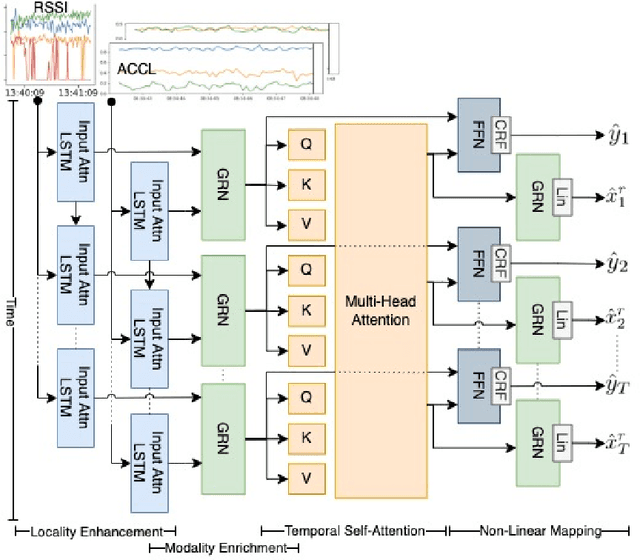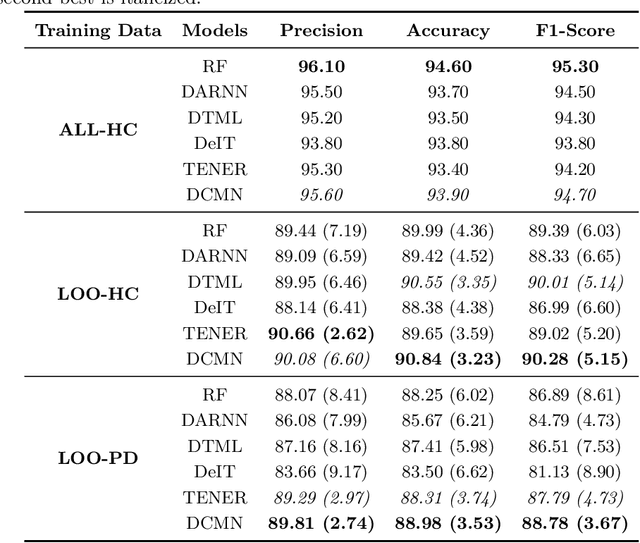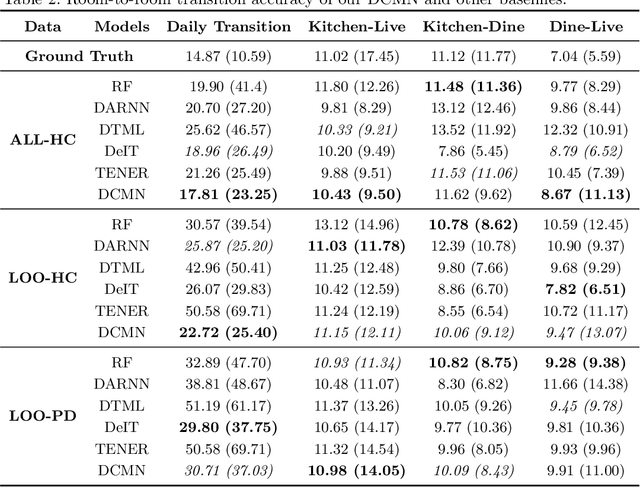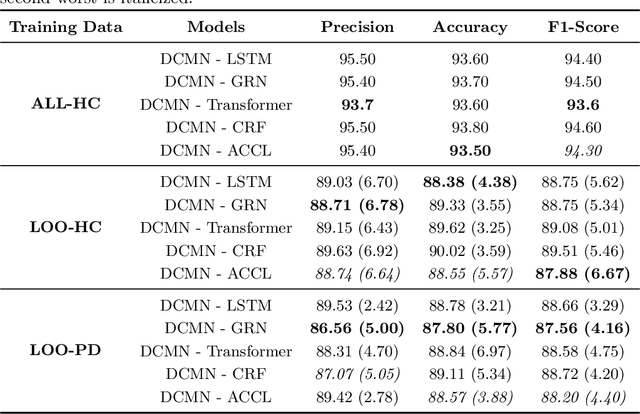Multimodal Indoor Localisation for Measuring Mobility in Parkinson's Disease using Transformers
Paper and Code
May 12, 2022



Parkinson's disease (PD) is a slowly progressive debilitating neurodegenerative disease which is prominently characterised by motor symptoms. Indoor localisation, including number and speed of room to room transitions, provides a proxy outcome which represents mobility and could be used as a digital biomarker to quantify how mobility changes as this disease progresses. We use data collected from 10 people with Parkinson's, and 10 controls, each of whom lived for five days in a smart home with various sensors. In order to more effectively localise them indoors, we propose a transformer-based approach utilizing two data modalities, Received Signal Strength Indicator (RSSI) and accelerometer data from wearable devices, which provide complementary views of movement. Our approach makes asymmetric and dynamic correlations by a) learning temporal correlations at different scales and levels, and b) utilizing various gating mechanisms to select relevant features within modality and suppress unnecessary modalities. On a dataset with real patients, we demonstrate that our proposed method gives an average accuracy of 89.9%, outperforming competitors. We also show that our model is able to better predict in-home mobility for people with Parkinson's with an average offset of 1.13 seconds to ground truth.
 Add to Chrome
Add to Chrome Add to Firefox
Add to Firefox Add to Edge
Add to Edge